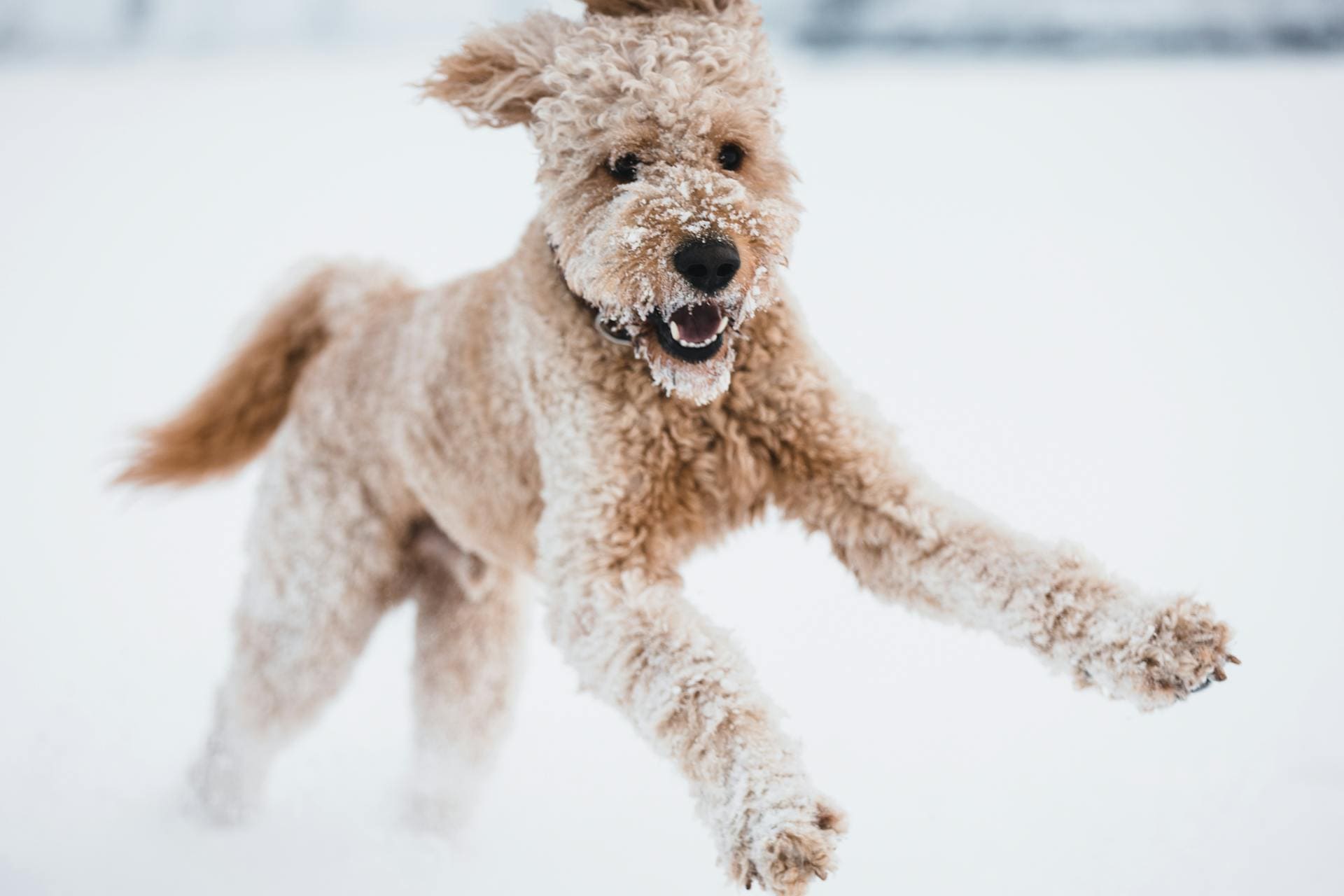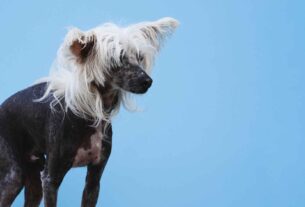The Australian Shepherd Labradoodle is a striking hybrid breed combining the best traits of the Australian Shepherd and the Labradoodle. These dogs are medium to large-sized, weighing between 30 to 60 pounds and standing about 18 to 24 inches tall. They have a sturdy, athletic build that suits their energetic and playful nature. Their coats vary widely—from straight to wavy or curly—and come in many colors, including black, chocolate, cream, red, and grey.
One of their most charming features is their expressive eyes, often light brown or blue, which reflect their intelligence and curiosity. Their floppy ears add to their endearing appearance, often perking up when they’re excited or alert. Overall, Australian Shepherd Labradoodles are loyal, friendly, and highly adaptable, making them wonderful family pets for active homes.
What Is an Australian Labradoodle?
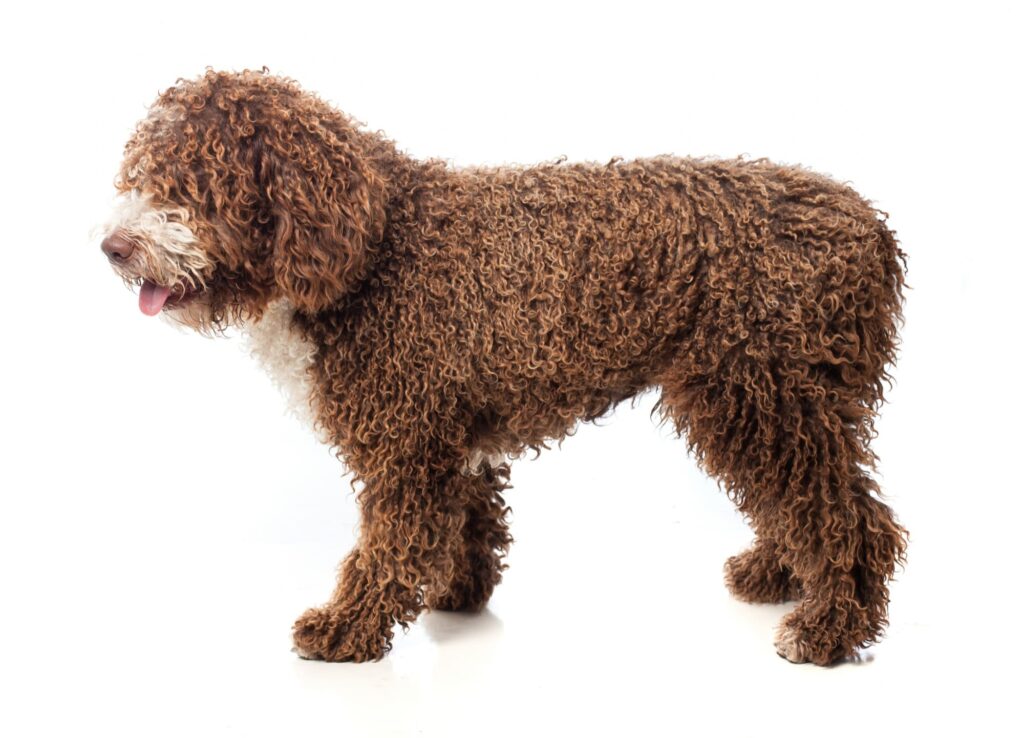
An Australian Labradoodle is a mix of Labrador Retriever, Poodle, and Cocker Spaniel. Some lines also include Irish Water Spaniel or Curly Coat Retriever. Born in Australia during the 1980s, these dogs were bred to be smart, gentle, and low-shedding service and therapy dogs.
They’re often confused with the regular Labradoodle (just a Labrador and Poodle mix), but the Australian Labradoodle stands out. It’s a carefully bred dog known for its friendly nature and soft, allergy-friendly coat.
Physical Characteristics of an Australian Shepherd Labradoodle
Let’s dive into the wonderful world of Australian Shepherd Labradoodles! This hybrid breed is a thoughtfully crafted blend of two beloved breeds—the Australian Shepherd and the Labradoodle. As you might expect, their physical traits are a fantastic mix of both, resulting in a dog that’s as striking as it is charming.
Size and Build
Australian Shepherd Labradoodles are medium to large-sized dogs with a sturdy, athletic build. They typically weigh between 30 to 60 pounds and stand around 18 to 24 inches tall at the shoulder. Not exactly lap dogs, they command a noticeable presence whether they’re trotting alongside you on a walk or chilling at home.
Coat Types and Colors
When it comes to their coat, these pups bring serious variety to the table. You can expect everything from straight to wavy and even curly hair, depending on their genetic mix. Their coats are usually soft and low-shedding, inheriting that hypoallergenic quality from their Labradoodle lineage—bonus for allergy sufferers!
Color-wise, Australian Shepherd Labradoodles are all about diversity. Their fur can come in shades of black, chocolate, cream, reds, and even greys. Some may sport striking merle patterns or solid coats, giving each dog a unique and eye-catching appearance.
Eyes That Speak Volumes
One of the most captivating features of this breed is their expressive eyes. Often a light brown or blueish hue, their eyes reflect keen intelligence and an eagerness to connect with their humans. These soulful eyes have a way of melting even the coldest hearts—trust me, they’re downright irresistible.
Ears That Steal the Show
Let’s not forget their adorable ears! Australian Shepherd Labradoodles typically have floppy ears that hang close to their heads, but those ears have a mind of their own. When they get excited or alert, they perk up in the most endearing way, showing off their playful personality.
Australian Labradoodle Temperament and Personality
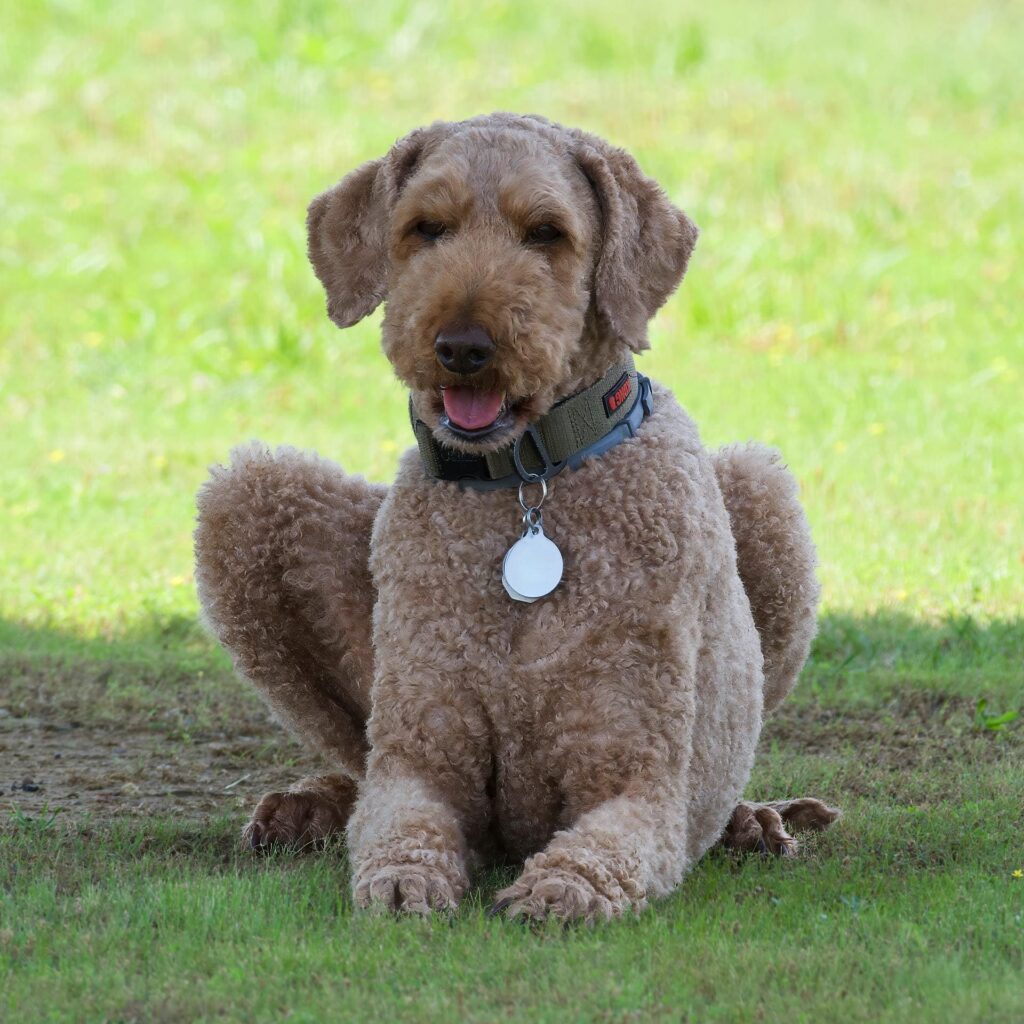
Australian Labradoodles are friendly, smart, and naturally social. They’re known for being calm around people and playful with other pets. These dogs thrive on human attention and do best in homes where someone’s usually around.
That’s the heart of the breed. They’re not guard dogs. They’re not couch potatoes. They’re that in-between sweet spot—a perfect mix of calm and curious.
These dogs were originally bred to be therapy animals. So their gentle nature isn’t a fluke. They’re intuitive. If you’re sad, they’ll sit beside you. If you’re upbeat, they’ll match your energy. And they don’t just love you—they want to know your neighbors, your friends, your mail carrier.
They’ve got just enough poodle to make them sharp, and enough Labrador to make them warm. That’s why the #labradoodlelove hashtag isn’t just cute—it’s true.
Are Australian Labradoodles Good with Kids?
Yes, Australian Labradoodles are excellent with kids. They’re gentle, patient, and love to play, making them one of the most family-friendly dogs out there.
Think of them as the babysitter you don’t have to pay. They won’t snap at a toddler’s grabby hands or flinch at loud noises. They’ll just sit there, tail wagging, tongue out, ready for the next round of backyard tag.
They’re not too big to be overwhelming. And not too small to be fragile. Just the right size for a game of fetch or snuggles on the couch.
Plus, their intuitive nature means they often sense moods—if your kid’s upset, your Labradoodle will be close by with a calm presence. It’s one reason they’ve become a go-to breed for therapy dogs.
Helpful tip:
If you’ve got young kids, teach them how to treat the dog with respect. No ear pulling, no rough play. In return, your Labradoodle will give them loyalty and love that lasts for years.
Australian Labradoodle Size and Weight Chart
Australian Labradoodles come in three sizes—miniature, medium, and standard. Their adult weight ranges from 15 to 65 pounds, depending on the size class.
Here’s how it breaks down:
| Size | Height (inches) | Weight (pounds) |
| Miniature | 14–16″ | 15–30 lbs |
| Medium | 17–20″ | 30–45 lbs |
| Standard | 21–24″ | 45–65 lbs |
These dogs grow fast in their first year, but the final size depends a lot on genetics. If you’re getting your Labradoodle from a breeder, ask to meet the parents—that’ll give you the clearest picture of what to expect.
Quick note:
Miniature Labradoodles are great for apartment living. Mediums strike a balance between size and playfulness. Standards love open space and long walks.
Still unsure which size suits your life best? Think about your living space, lifestyle, and energy level. A Standard may not be the best fit if you’re more “Netflix on the couch” than “hike every weekend.”
Australian Labradoodle Temperament and Personality
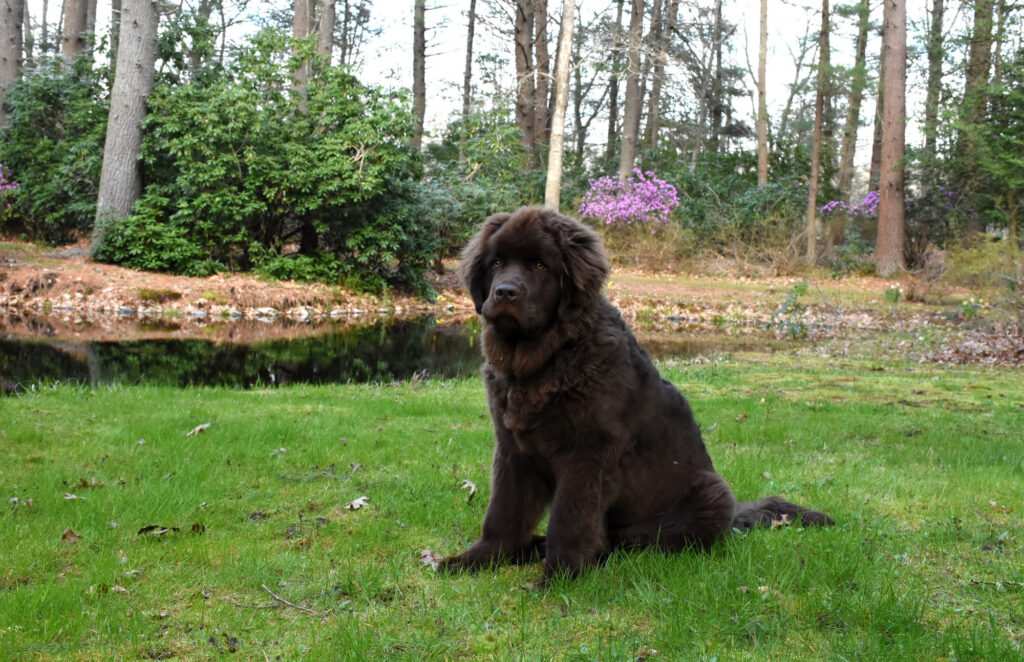
Australian Labradoodles are friendly, clever, and deeply people-focused. They’re known for being gentle with kids, sociable with other pets, and eager to please.
They’ve got the smarts of a Poodle, the warmth of a Labrador, and a people-first attitude that makes them natural therapy dogs. It’s no wonder they’re top picks for families, first-time dog owners, and anyone needing an emotional support animal.
Think of them as the golden retrievers of the designer dog world—only with curls.
They’re not just “cute and cuddly.” These dogs thrive on human interaction. Leave one alone too long and you’ll come home to chewed shoes or a shredded pillow. They love company—whether that’s a toddler, another dog, or a grandparent.
Training comes easy. They’re quick learners and respond well to treats, praise, and short sessions. Perfect for learning basic commands or even advanced tricks.
Family-friendly? Absolutely.
If your household includes energetic kids, this dog will happily keep pace. If it’s more low-key, they’ll adjust to that too. They’re flexible and emotionally in tune with their humans—almost like they know what you need before you say it.
Best Food for Australian Labradoodle Puppies
The best food for Australian Labradoodle puppies is a high-quality, balanced diet rich in protein, healthy fats, and essential nutrients to support their rapid growth and active lifestyle.
Start with puppy formulas made for medium to large breeds if you have a standard size, or smaller breed formulas for minis. Look for foods with named meat sources like chicken, lamb, or salmon as the first ingredient. Avoid fillers like corn or soy — these add little nutrition and can cause allergies.
Omega-3 fatty acids are important to keep that beautiful, hypoallergenic coat shiny and healthy. Plus, probiotics and fiber support good digestion, which helps prevent tummy troubles.
Feeding tip:
Feed smaller meals 3-4 times a day to keep energy steady and avoid bloating—a concern for larger dogs.
How to Groom an Australian Labradoodle
Grooming an Australian Labradoodle means regular brushing, occasional trimming, and keeping ears and nails in check to maintain their hypoallergenic coat and overall health.
Their soft, curly or wavy fur doesn’t shed much, but it can mat fast if you skip brushing. Aim for brushing at least 3 times a week. Use a slicker brush or a comb designed for curly coats to gently work through tangles.
Bathing every 4-6 weeks keeps their coat fresh without drying out their skin. Use a gentle, dog-specific shampoo to avoid irritation.
Don’t forget ears—clean them weekly to prevent infections, especially since their floppy ears can trap moisture. Also, clip nails every few weeks to avoid discomfort.
If grooming feels overwhelming, a professional groomer every 6-8 weeks can help keep your pup looking sharp.
Training Tips for Australian Labradoodle Puppies
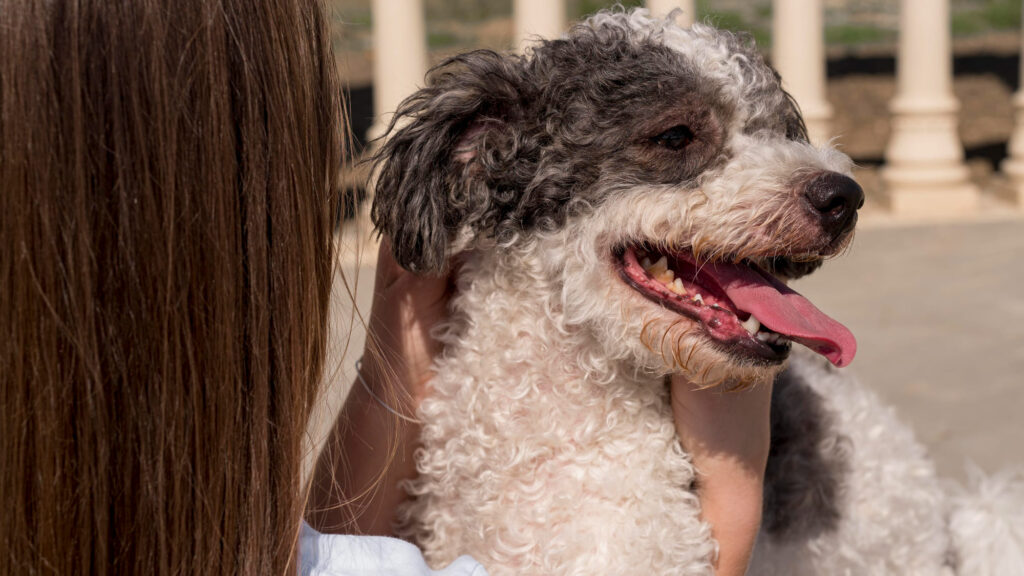
Training an Australian Labradoodle puppy is easiest when you start early, keep sessions short, and use positive reinforcement like treats and praise.
These dogs are eager to learn and quick to pick up commands. Keep training fun and consistent. Start with basics like “sit,” “stay,” and “come,” then move to leash walking and socialization.
Remember: patience is key. Puppies can get distracted easily, so short 5-10 minute sessions work best. Mix training with play to keep their attention.
Socialize your pup early to avoid shyness or anxiety around new people and dogs. The more experience they have, the more confident they’ll grow.
Tip: Use high-value treats for motivation, especially during tricky commands or when distractions increase.
Australian Labradoodle vs. Goldendoodle Differences
Australian Labradoodles and Goldendoodles share traits but differ in coat, temperament, and origins.
Australian Labradoodles often have a curlier, more allergy-friendly coat thanks to their careful breeding, including Poodles, Labradors, and sometimes Spaniels. Goldendoodles, a mix of Golden Retriever and Poodle, usually have wavier coats that shed a bit more.
Temperament-wise, Aussies tend to be a bit more energetic and focused, while Goldendoodles are typically easygoing and affectionate. Both are smart, friendly, and family-oriented dogs, but Aussies may require more mental stimulation.
If allergies are a concern, Australian Labradoodles might be the safer bet. For a laid-back companion, a Goldendoodle fits well.
Finding Reputable Australian Labradoodle Breeders Near Me
Finding a good Australian Labradoodle breeder means looking for health testing, ethical breeding, and happy puppies.
Avoid puppy mills or backyard breeders who focus on quick profits. Instead, seek breeders who prioritize health screenings for hips, eyes, and genetic issues.
A reputable breeder will gladly answer your questions, show you where puppies are raised, and provide references. They also often have waiting lists because their dogs are in demand for good reason.
Check online reviews, local breed clubs, or ask your vet for breeder recommendations. This helps ensure your new pup has the best start in life.
Australian Labradoodle Allergy-Friendly Coat Care
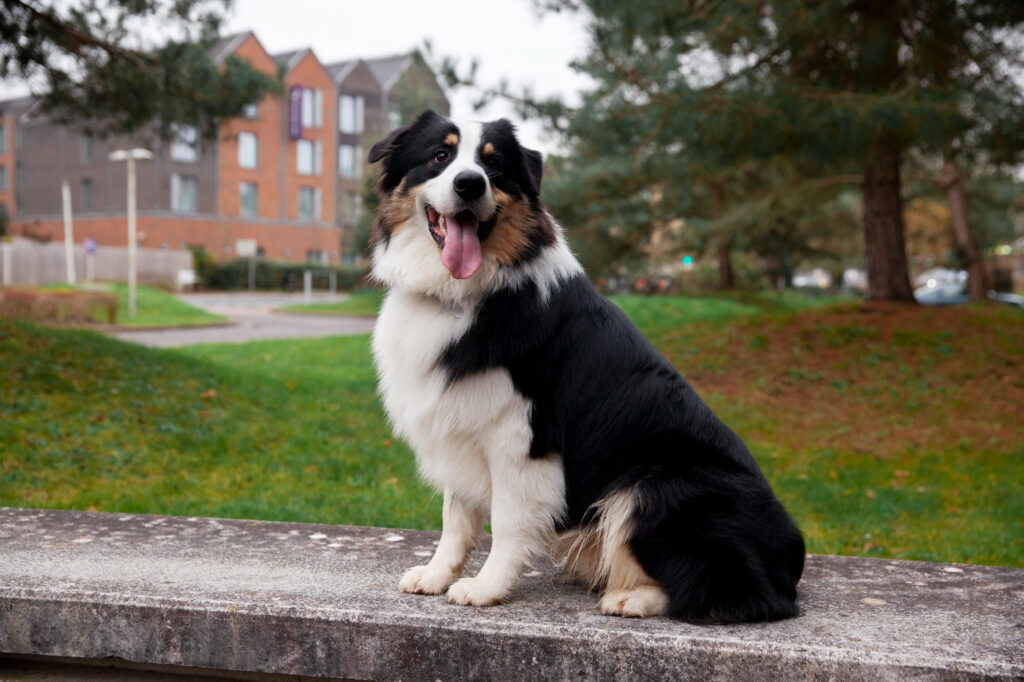
Australian Labradoodles have coats that shed very little, making them a popular choice for allergy sufferers.
Their curly, wool-like fur traps dander better than many breeds. But regular grooming is key to keeping allergens low and the coat healthy.
Brush your doodle’s coat at least 3 times a week to prevent mats and remove loose hair. Bathing every 4-6 weeks with a gentle, hypoallergenic shampoo keeps skin clear without drying it out.
Professional grooming every 6-8 weeks helps maintain coat texture and hygiene. Don’t forget ear cleaning, since floppy ears can trap moisture and cause infections.
Cost of Owning an Australian Labradoodle
Owning an Australian Labradoodle comes with upfront and ongoing costs you should plan for.
Expect to pay between $2,000 and $4,000 for a well-bred puppy from a reputable breeder. This price reflects health testing, quality care, and pedigree.
Beyond that, budget for food, grooming, vet visits, training, and pet insurance. Grooming alone can cost $50 to $100 every month due to their curly coat.
Food costs vary by size and age but plan on premium dog food to keep your pup healthy. Training classes and toys add to the budget but make a big difference in behavior and happiness.
Australian Labradoodle Energy Levels and Exercise Needs
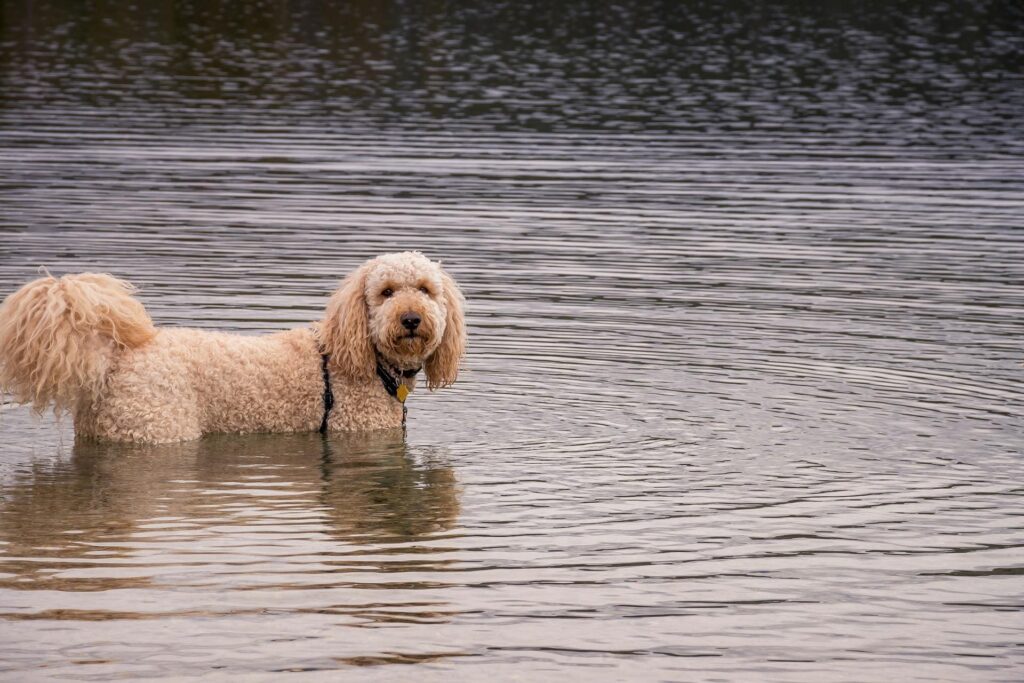
Australian Labradoodles have moderate energy but need both mental and physical activity to stay happy. About 30 to 60 minutes of playtime or walks daily usually does the trick. They don’t require long runs or hikes, but many love spending active time with their owners.
Keep in mind, each dog is different—some might want more or less exercise to feel their best.
How Long Do Australian Labradoodles Live?
Australian Labradoodles typically live between 12 and 15 years. Smaller dogs usually have longer lifespans than bigger ones. Keep in mind, diet, exercise, genetics, and injuries all play a role in how long your dog stays by your side.
What Health Problems Do Australian Labradoodles Have?
Australian Labradoodles can face hip and elbow dysplasia, common in larger dogs. They’re also prone to ear infections, allergies, eye issues, Addison’s disease, and epilepsy. Regular vet check-ups help catch problems early. If your dog shows worrying symptoms, don’t wait—get them checked out right away.
Australian Labradoodle Coat Types
Australian Labradoodles come with three main coat types: fleece, wool, and hair.
- Fleece: Soft and silky, fleece coats can be wavy or curly. They don’t shed much and are pretty easy to care for.
- Wool: These curls have a cotton-like feel, much like a Poodle’s coat. Wool coats shed very little but need more grooming, especially if grown long.
- Hair: Hair coats can be straight or slightly wavy. They’re easier to maintain but might shed more. This coat type is common in first-generation Labradoodles (F1).
Australian Labradoodle Colors
Australian Labradoodles come in a rich variety of colors and patterns, making each pup unique.
From classic solid shades to multi-patterned coats, there’s a Labradoodle color for almost every taste. While this isn’t an exhaustive list, here are some common and eye-catching options you’ll encounter:
- Cream: A soft, pale shade that looks elegant and bright. Perfect if you like lighter-colored dogs.
- Chocolate: Deep, rich brown tones that give a warm and inviting look.
- Red: A vibrant, rusty hue that stands out in a crowd. This color is often linked to high-energy Labradoodles.
- Apricot: Somewhere between cream and red, apricot has a warm peachy glow.
- Black: Classic and sleek, black coats offer a striking contrast with any eye color.
- Parti-color: These pups have large patches of two or more colors, usually white with another shade like black or brown, giving them a playful, patchwork look.
- Phantom: A dramatic pattern where the dog has a base color (often black or chocolate) with tan markings on the eyebrows, cheeks, and legs.
- Sable: A unique mix where individual hairs have bands of color, usually creating a soft, shaded effect that changes with light.
conclusion
The Australian Shepherd Labradoodle is truly a remarkable blend of intelligence, loyalty, and charm. With their sturdy build, beautiful coat variations, and affectionate nature, they make wonderful family pets and companions. Whether you’re drawn to their striking looks or their playful personality, this hybrid breed offers a perfect balance of energy and calm.
If you’re ready for a loving, smart, and adaptable dog, the Australian Shepherd Labradoodle might just be the perfect fit for your home. Remember, with proper care, training, and lots of love, your Labradoodle will bring years of joy and companionship.

